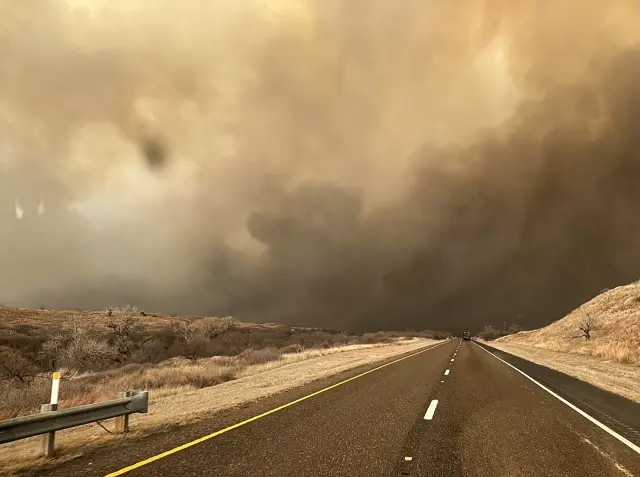-
Dog Owner Hears ‘Squeaking’ Near Christmas Tree—Can’t Help but Smile at Why - 30 mins ago
-
ICE tore apart families. The community brought back some Christmas joy - 36 mins ago
-
Heavy Rains and Floods Threaten California on Christmas Day - 49 mins ago
-
How the Grinch went from a Yuletide bit player to a Christmas A-lister - about 1 hour ago
-
Pope Leo Surprises St. Peter’s Crowd Before Christmas Eve Mass - 2 hours ago
-
Couple Told Labrador Puppy Will Be ‘So Big,’ What She Grows Into Goes Viral - 2 hours ago
-
Vikings GM Drops Hint on JJ McCarthy’s Future After Up and Down Year - 2 hours ago
-
Martin Scorsese: Rob Reiner Had Me in the Palm of His Hand - 2 hours ago
-
Why Russia Is Likely to Reject the New US-Ukrainian Peace Plan - 3 hours ago
-
I’ve Been the U.N. High Commissioner for Refugees for a Decade. This Is the Crisis I See. - 4 hours ago
Thousands Advised to Stay Inside in Nebraska, South Dakota, Minnesota
Residents in parts of Nebraska, South Dakota, and Minnesota have been advised to stay indoors as smoke from Canadian wildfires drifts into the region, pushing air quality levels from “Moderate” to “Unhealthy” in some areas.
Why It Matters
Poor air quality can worsen heart conditions or even trigger respiratory health conditions like asthma, and sensitive groups, such as pregnant women and the elderly, are particularly vulnerable. It can also impact outdoor work, like farming, and disrupt travel, if conditions worsen.
What To Know

AirNow—which is part of the U.S. Environmental Protection Agency—reports on air quality levels, using the Air Quality Index (AQI), which categorizes air quality according to levels of concern, from “Good” to “Hazardous.” For example, “Good” air quality ranges from 0 to 50 on the index, whereas “Hazardous” air quality is 301 or higher.
It’s issued parts of South Dakota—including large parts of the Badlands National Park—with an “Unhealthy” air quality warning, giving it a score of 167 (“Unhealthy air quality ranges from 151 to 200, before it’s escalated to “Very Unhealthy”).
This is because smoke from Canadian wildfires has drifted into the region, causing elevated levels of fine particulate matter (PM2.5) in the air. These particles are tiny (less than 2.5 micrometers in diameter) and can penetrate deep into the lungs, posing health risks, especially for sensitive groups and people with existing heart or lung conditions.
Other areas in the state, including Bennett, Oglala Lakota, Meade, Pennington, and Jackson Counties, received “Moderate” air quality warnings, which are in the lower 50s on the AQI.
In Nebraska, areas around Douglas County—including Omaha and Carter Lake—received a ”Moderate” air quality warning, with a score ranging from 52 to 56, overnight on Sunday. Areas in central, east central, northwestern, and south central Minnesota, including Coon Rapids, Brooklyn Park, and parts of Interstate 35W, have received moderate air quality warnings, with “sensitive groups” in parts of the Northern Twin Cities Metro issued an “Unhealthy” air quality warning.
What People Are Saying
The EPA says: “Some particles less than 10 micrometers in diameter can get deep into your lungs, and some may even get into your bloodstream. Of these, particles less than 2.5 micrometers in diameter, also known as fine particles or PM2.5, pose the greatest risk to health.”
What Happens Next
AirNow has advised people in “Unhealthy” air quality areas to choose less strenuous activities or reduce the amount of time they are active outdoors. Those with “Moderate” air quality warnings should “consider reducing activity levels, or shorten the amount of time they’re active outside if they’re “unusually sensitive to particle pollution.”
Source link















